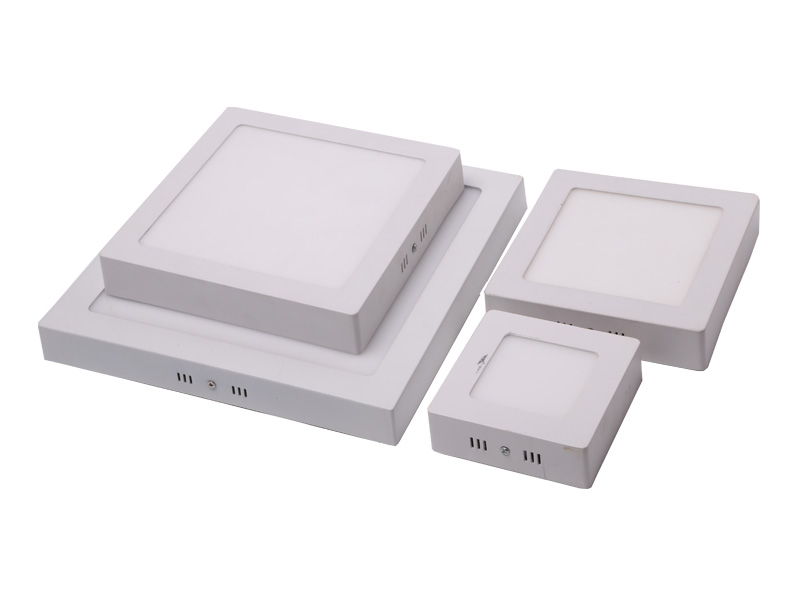Why are LED floodlights the best choice for outdoor lighting?
15-12-2025Ningbo sunle Lighting Electric Co.,Ltd
With the rise of environmental awareness and advancemen […]
With the rise of environmental awareness and advancements in energy-saving technologies, LED panel lights have gradually replaced traditional incandescent bulbs.

At the time of purchase, incandescent bulbs are typically priced lower. They are a common lighting option in households, and their affordability makes them popular among budget-conscious consumers. However, this low price comes with hidden long-term costs.
In contrast, LED panel lights have a higher initial purchase cost. Due to the advanced semiconductor technology and efficient light source used in manufacturing LED lights, they are generally more expensive than incandescent bulbs. However, as production technology has progressed, the prices of LED panel lights have steadily decreased, making them more accessible to the general market.
In the long run, incandescent bulbs are less cost-effective. Due to their low efficiency, most of the electrical energy consumed by incandescent bulbs is converted into heat rather than light. This results in higher electricity bills and more frequent bulb replacements, leading to higher maintenance costs. Incandescent bulbs typically have a lifespan of around 1,000 hours.
In contrast, LED panel lights are highly efficient, converting almost 90% of electrical energy into light. This means they consume far less electricity, and their average lifespan is 25,000 to 50,000 hours, significantly reducing both electricity costs and the frequency of bulb replacements. While the initial investment is higher, the energy savings and longer lifespan make LED panel lights more cost-effective in the long run.
| Lighting Device | Initial Cost | Annual Electricity Cost (Assuming 3000 Hours of Use) | Replacement Frequency | Lifespan |
|---|---|---|---|---|
| Incandescent Bulb | Low | High | High | ~1,000 hours |
| LED Panel Light | High | Low | Low | ~25,000-50,000 hours |
LED panel lights offer superior brightness performance. They utilize advanced light source technology, allowing for a more uniform distribution of light without the concentrated heat that often accompanies incandescent bulbs. The brightness of LED panel lights is also adjustable, making them suitable for a variety of environments.
On the other hand, incandescent bulbs produce concentrated light with relatively lower efficiency. They lack the ability to adjust brightness and, over time, tend to dim, reducing their effectiveness as a long-term lighting solution.
LED panel lights provide better light quality than incandescent bulbs. Due to their unique design, LED panel lights distribute light evenly and do not emit UV or infrared radiation, making them more comfortable for the eyes. They also allow for adjustable color temperatures, giving users the option to choose cool light (ideal for work environments) or warm light (ideal for home settings).
Incandescent bulbs produce warm light, but over time, their light becomes yellowed and less bright, affecting the visual quality. Additionally, as incandescent bulbs age, the light intensity gradually diminishes.
| Lighting Device | Brightness | Color Temperature | Light Quality |
|---|---|---|---|
| Incandescent Bulb | Low, Concentrated | Warm | Warm but Uneven |
| LED Panel Light | High, Even | Cool or Warm | Even Light, Comfortable |
LED panel lights have an impressive lifespan, typically lasting 25,000 to 50,000 hours. This is 25 to 50 times longer than incandescent bulbs, which typically last around 1,000 hours. Even if used for 12 hours a day, an LED panel light can last over 10 years, making it a long-term investment that requires little maintenance.
Incandescent bulbs have a much shorter lifespan. Their typical lifespan is only around 750 to 1,000 hours. After prolonged use, their brightness significantly decreases, and they may even burn out entirely due to a broken filament. This frequent need for replacement makes incandescent bulbs more costly to maintain in the long run.
| Lighting Device | Lifespan | Usage Duration | Replacement Frequency |
|---|---|---|---|
| Incandescent Bulb | ~1,000 hours | Short | High |
| LED Panel Light | ~25,000-50,000 hours | Long | Low |
LED panel lights are much more environmentally friendly compared to incandescent bulbs. LED lights do not contain harmful substances such as mercury or lead, and their high energy efficiency significantly reduces energy consumption. The long lifespan of LED panel lights also reduces waste, making them a greener choice overall.
Incandescent bulbs are less environmentally friendly due to their low energy efficiency and shorter lifespan. They consume more electricity and need to be replaced more frequently, which contributes to more waste and pollution. Furthermore, incandescent bulbs often contain small amounts of harmful substances and are not as recyclable as LED panel lights.
One of the major advantages of LED panel lights is their low heat emission. Since most of the energy is converted into light, LED lights generate very little heat. This results in a safer lighting solution, particularly in environments where temperature control is important, such as homes with children or commercial spaces.
In contrast, incandescent bulbs generate a lot of heat. Most of the electrical energy they consume is converted into heat rather than light, making them inefficient and potentially hazardous. The high surface temperature of incandescent bulbs can pose a fire risk and increase the ambient temperature in the room, which is particularly problematic in warmer climates or enclosed spaces.
| Lighting Device | Heat Generation | Surface Temperature | Safety |
|---|---|---|---|
| Incandescent Bulb | High | High | Lower Safety |
| LED Panel Light | Low | Low | High Safety |